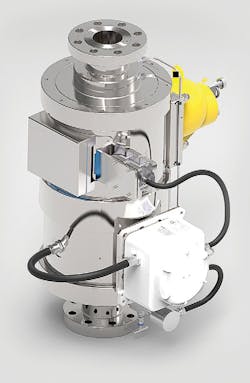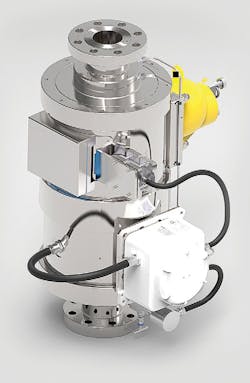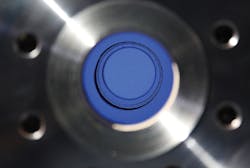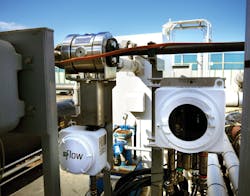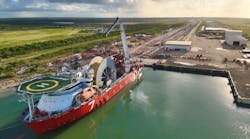Innovative design reduces manpower needs
Giles Edward
M-Flow
Accurate measurement has perennially been one of the most acute long-term challenges to the upstream industry. Multi-phase metering was initially developed to meet these demands in offshore and subsea wells by delivering the measurement of multi-phase streams close to the well in confined or inaccessible areas, so that its operators and innovators could deliver optimized production and better reservoir exploitation.
This trend began almost 30 years ago. The expectation was that multiphase metering technology for oil, gas, and water flow would evolve to be able to not only provide valuable data, but also to deliver cost savings. Those cost savings would facilitate single well tiebacks, shared use of existing platform and pipeline facilities, and continuous online monitoring for economically marginal wells.
However, over the years, the multi-phase market has not fulfilled these ambitions. In large part this is because it has prioritized expensive technology that embeds uncertainty in flow rate measurement over accuracy and repeatability in parameters that can be directly measured. This inherently leads to complexity, human intervention, and validation-hungry systems.
New multi-phase meter design. (Images courtesy M-Flow)
Cumbersome and expensive test separators remain in operation attempting to fill this knowledge gap; but they provide only piecemeal or fragmented information that rarely delivers more than limited value. So while oil and gas companies seek the benefits of access to data, for wellhead metering and in the current oil price environment are hungry to reduced costs, they’ve been consistently unable to access lower cost reliable and reproducible information sets.
Non-intrusive pipe view.
A CEO of a major oil company recently said: “When I first started attending senior management and board meetings, the data on production was often unreliable or unavailable. Decades later, that has barely changed. Until we have accurate, trustworthy data there will be little progress towards more efficient oilfields.”
Operational changes
In the last 10 to 15 years, the oil market has evolved considerably with maturing assets and especially the now accepted lower for longer oil price. So much so that many of the beliefs and principles that guided decision making even a decade ago are no longer as useful as they once were. The operating models from those years were for a long time the templates for success, but now too many aspects of them add cost, and stifle implementation of best practice.
Over recent years, low prices have forced oil and gas companies to get serious about rising production costs. These have included project optimization, reducing facility size, changing facility concept, cutting well count, improving well design and well efficiencies. Now the challenge is to sustainably preserve those gains, and build upon the foundations that have been laid. To do that will take fresh thinking, and a re-examination of how we approach its development.
One of the biggest factors that will govern the future price of oil is the extent to which the standardized, manufacturing-like processes that characterize tight oil production are implemented across the industry. In the shale plays in the USA’s Lower 48 states, best practices have transposed swiftly between operators and operations. These practices include pad drilling, high-volume completions, and tighter well spacing. All have made statistically visible differences to costs and how quickly and successfully projects are brought to commercialization.
At the heart of this process has been the use of reliable data to improve performance through reproducibility and tight process control. For offshore, with its longer lead times and legacy infrastructure, the need for data is driven by different factors. But it is just as badly needed to deliver the marginal gains that incrementally compound into significant improvements.
Capital discipline has led to an austere investment approach because of offshore’s higher capital intensity and slower payback. When operating in a price-constrained environment and looking for a competitive breakeven, the first focus in achieving sustainable improvements is to upgrade your understanding of your operations and your business’s assets.
To do this requires elemental knowledge of your setup, and the ability to answer straightforward questions about your wells: When and where did the water in my process come from? What does this mean for my reservoir planning? Do I have the basic data to run virtual flow meters to allocate well production? Could the onset of damaging acid gas or scale be avoided?
Multi-phase meter field package.
Production optimization
By re-thinking the challenges that have inhibited the growth of multi-phase data for the production optimization market, equipment manufacturers have developed technology and global solutions that provide confidence at the wellhead, delivering data with reliability, repeatability, and accuracy.
In contrast to traditional meters, a new type of carbon fiber multi-phase meters require minimal manpower, lower capital expenditure, and almost zero operational expenditure, with five-year lifecycle meter costs that are on average 20% of traditional multi-phase flowmeter costs. At the same time, this new metering technology delivers directly measured, constant data on water cut and gas fraction with certainty regarding accuracy and repeatability.
The proven reliability of this technology facilitates a shift in the traditional engagement. Moreover, by providing this information in a packaged, discreet, and highly valuable data set, there can now be a shift in focus: moving dialogue and engagement within the multi-phase market away from the meter, and onto the impact of accurate and reliable data to redefine upstream operations.
Next steps
The offshore industry cannot easily reinvent its infrastructure. Consequently, a key objective is to optimize existing production and bring in new reserves at a lower cost. Across most process industries, getting more out of what exists is a game of improving control.
Lord Kelvin’s words 134 years ago ring as true now: “When you can measure what you are speaking about, and express it in numbers, you know something about it. When you cannot express it in numbers, your knowledge is of a meagre and unsatisfactory kind.” Data with reliability, repeatability, and accuracy does not have to to be a challenge that spans generations.
Measurement technologies and systems that enable accuracy, repeatability and reliability are vital to meet offshore’s ability to remain competitive in a world of resource abundance. However, to provide the actionable insights, offshore needs will first take trustworthy data at the wellhead.
The author
Giles Edward is CEO of M-Flow.
